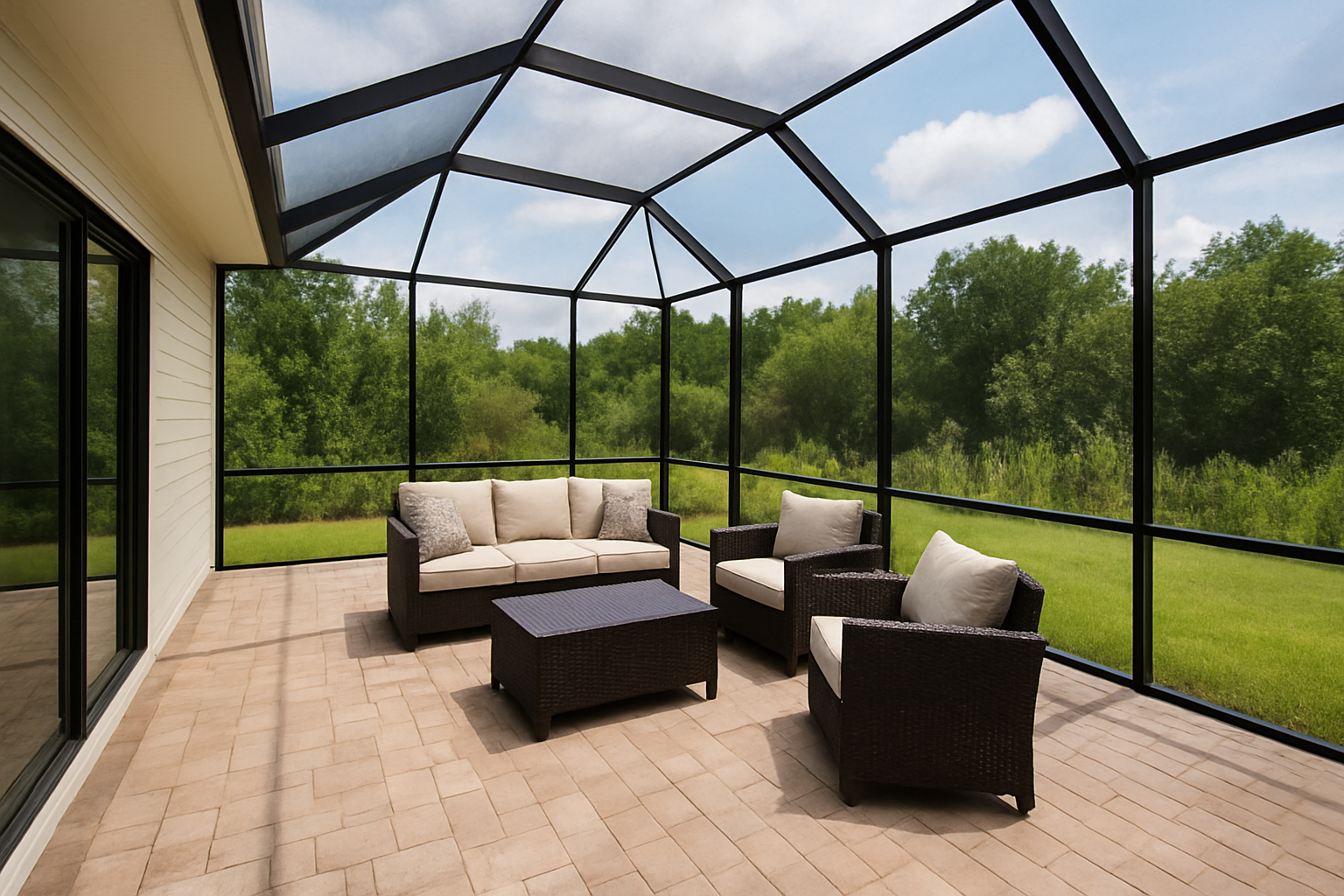
A screened patio is one of the best ways to enjoy the outdoors without the hassle of bugs, debris, or harsh sunlight. It adds comfort, value, and function to your home. But when it comes to screen patio installation, many homeowners and even contractors can run into issues that lead to frustration and costly repairs down the road. Whether you’re considering a DIY installation or hiring a professional, knowing the common mistakes in screen patio installation can save you time, money, and stress.
Below, we’ll dive into the most frequent errors people make when installing a screen patio, along with practical solutions and expert insights to ensure your project lasts for years to come.
1. Choosing the Wrong Type of Screen Material
One of the most common mistakes is selecting a screen material that doesn’t fit your climate, lifestyle, or budget.
Fiberglass screens are affordable but may sag or tear quickly.
Aluminum screens are durable but can dent or crease.
Pet-resistant screens are stronger for households with pets but cost more upfront.
Solution: Consider your environment and household needs before purchasing. For example, coastal homes often require corrosion-resistant aluminum, while pet owners should invest in pet-resistant mesh.
2. Poor Measurement and Sizing Errors
Improper measurements often lead to gaps, loose screens, or panels that don’t fit. A screen that’s too tight can warp the frame, while one that’s too loose will sag.
Solution: Measure twice, cut once. Always use precise measuring tools and account for expansion in hot or humid climates.
3. Skipping Surface Preparation
Installing a screen patio over dirty, uneven, or damaged surfaces is a recipe for failure. Dirt, mold, and cracks in the frame or patio base can weaken the entire structure.
Solution: Clean and repair surfaces before installation. Sand rough areas, patch cracks, and apply a protective sealant where necessary.
4. Using Low-Quality Fasteners and Hardware
Even the best screen won’t last if it’s secured with weak fasteners. Cheap staples, nails, or screws can rust, loosen, or fail under pressure.
Solution: Invest in stainless steel or galvanized fasteners that resist rust and corrosion. This is especially important in humid or coastal areas.
5. Not Accounting for Wind and Weather Conditions
Many homeowners underestimate how much wind, rain, and temperature changes can impact their patio screens. Without reinforcement, screens can tear or frames may warp.
Solution: Install wind-resistant features, such as stronger frames or additional support bars. In hurricane-prone areas, consider reinforced screen enclosures.
6. Incorrect Screen Tension
Screens that are too tight may rip during installation, while those that are too loose will sag within months.
Solution: Use a spline roller correctly and maintain consistent tension throughout the installation. A balanced approach ensures the screen remains flat but not overstretched.
7. Ignoring Drainage and Water Flow
If water pools around the screen patio foundation, it can cause structural damage, mold growth, and weakened materials.
Solution: Ensure proper drainage by sloping the patio base slightly away from the house and using water-resistant sealants.
8. Overlooking Frame Alignment
Crooked or misaligned frames make the entire patio look unprofessional and reduce stability.
Solution: Always check alignment with a level tool before fastening frames. A strong, even foundation is key to a long-lasting patio screen.
9. DIY Without the Right Tools
Many DIYers attempt to install patio screens using makeshift tools, which often results in poor results.
Solution: Use professional-grade tools like spline rollers, power drills, and heavy-duty cutters. Renting tools is often more affordable than replacing damaged screens.
10. Skipping Professional Help When Needed
While DIY can save money, some projects are too complex for beginners. Incorrect installation often leads to higher repair costs later.
Solution: If you’re unsure, hire a professional installer. Their expertise ensures proper installation, code compliance, and long-term durability.
Final Thoughts
Installing a screened patio is a rewarding home improvement project that can provide comfort and value. However, making common screen patio installation mistakes can lead to sagging screens, water damage, and wasted money. By preparing properly, choosing the right materials, and knowing when to call in professionals, you can enjoy a functional, attractive screened patio for many years.
A flawless patio screen installation comes down to careful planning, attention to detail, and investing in quality materials. Avoiding these pitfalls ensures your patio becomes a durable extension of your home, perfect for relaxing, entertaining, and enjoying the outdoors.



